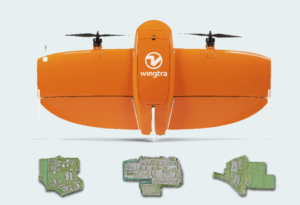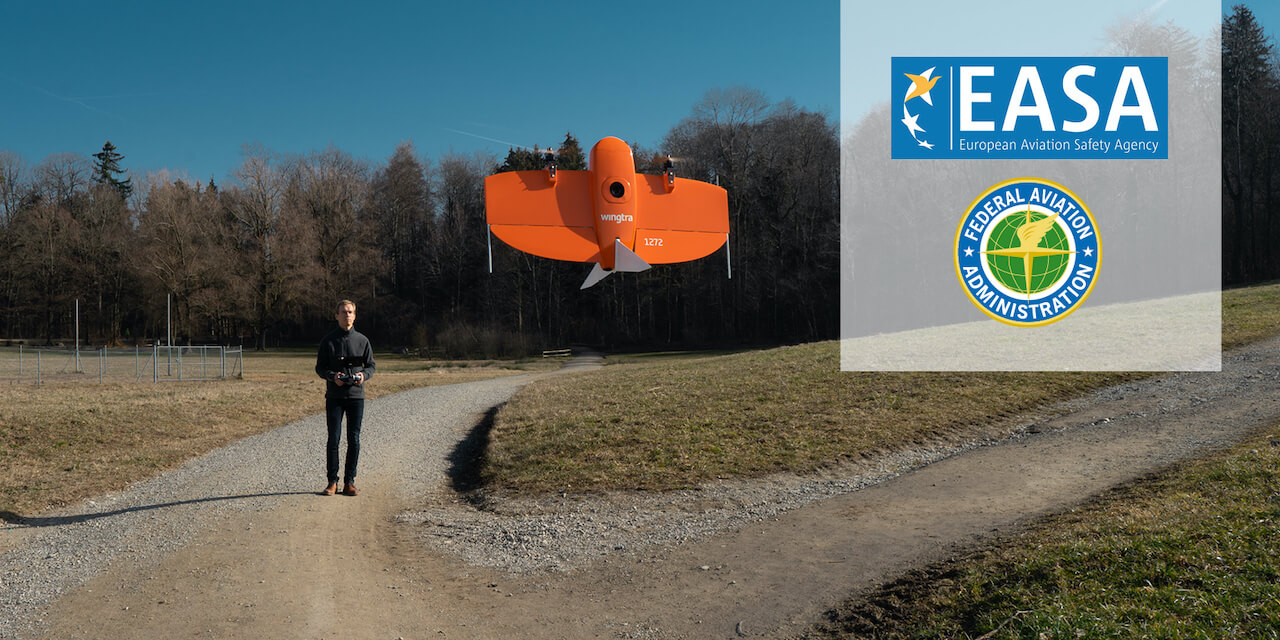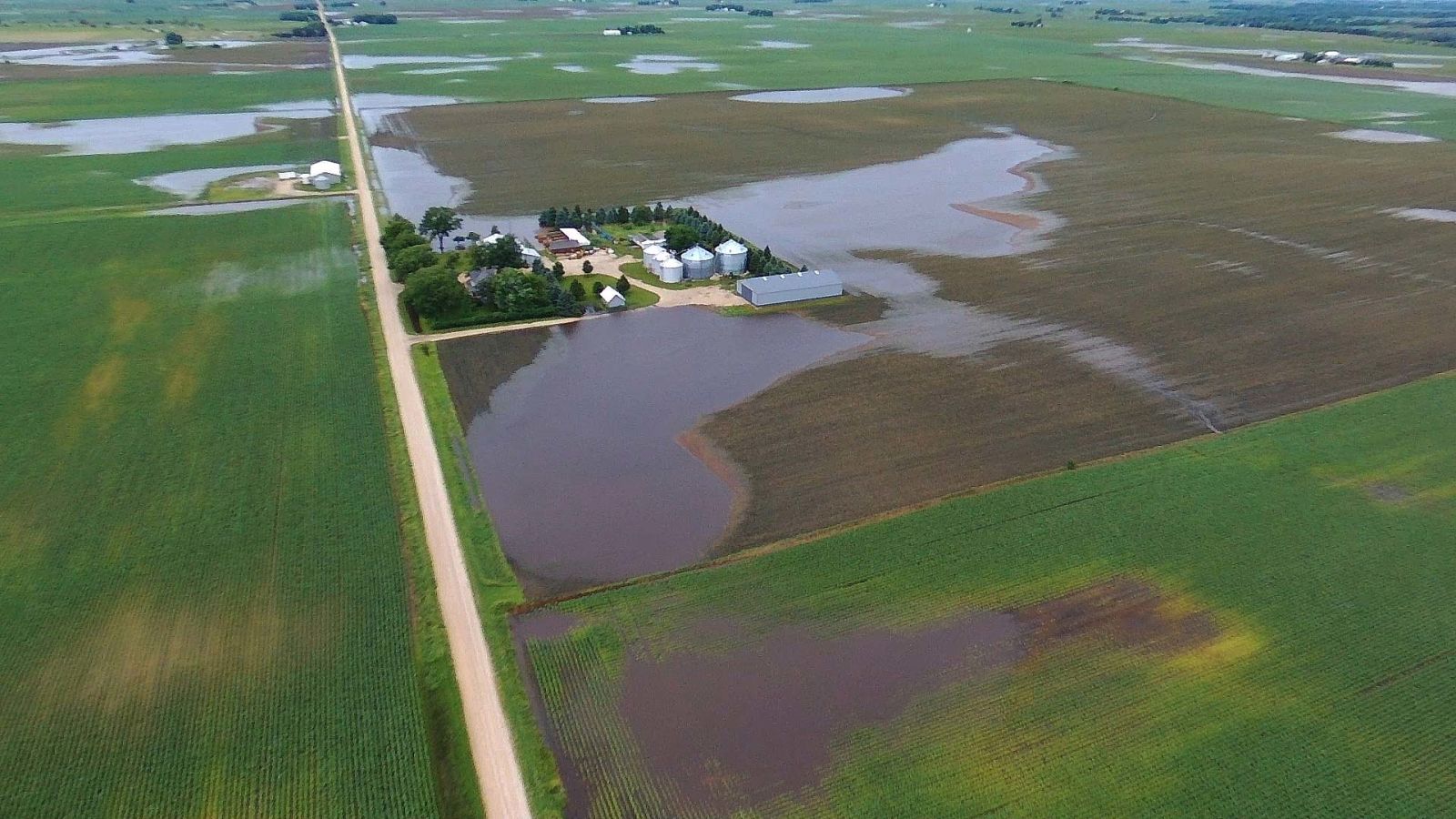Ground control points: How many do you need (and when are checkpoints enough)?

Ground control points (GCPs) are fundamental tools in GIS and surveying. Sometimes GCPs are not needed, e.g., when surveying results are only for relative accuracy or to assess some details of an area by themselves. But when your aerial survey must feature absolute location accuracy—i.e., all points on the map have geo locations that tightly align with the points on Earth they represent—GCPs are a way to help ensure that accuracy.
When do we need ground control points, and how many?
To understand ground control points in aerial photography, you can envision your drone map floating over the real area it represents. In this metaphor, thin spikes poke through the map and into the ground at precisely measured points along the Earth—points with known X, Y (horizontal axis) and Z (vertical axis) coordinates.
In cases where the aerial survey data is not corrected by real-time kinematic (RTK) or post-process kinematic (PPK) methods, GCPs need to exist at frequent intervals around your surveying area so that the map result is more accurate than standalone GPS-grade accuracy (a few meters).
Another case where you would need so many GCPs is if the drone data should be aligned with existing terrestrial measurements or with a custom coordinate system where no accurate transformation is available.

Ground control points mark an exact point on Earth. They can be placed on an already-known point, or to establish the most accurate location, receiver will log its location according to the GCP center for several hours or a few minutes in RTK mode.
To better understand point distribution, imagine a table that requires weight on the top to be balanced. It will tip if the weights are not balanced across it, and it will be weak if they are too far apart. Evenly-distributed GCPs give you a strong model. The bigger and more complicated the area, the more GCPs needed.
For larger surveys, this can be labor intensive—not only to place the points accurately, but also to make sure nothing happens to them over the survey period. Hence the boom in RTK and PPK drone payloads. When you are flying with RTK or PPK-equipped drones, you don’t need so many GCPs. In fact, if your equipment is reliable, you may not need any, which we’ll get to later.
GCPs serve as an added layer of security, ensuring that your mapping outputs align with actual Earth-centric coordinates.
It’s important to note that GCPs are an integral part of post-processing the outputs, and the map results will be adjusted to fit the real-ground points you’ve placed, captured and “told” the software to honor. In fact, GCPs need to be the almighty truth in terms of accuracy, because they are a limiting factor, and a map can even be stretched to obey their placement. Let’s look at how to make sure they are as close to reality as possible.
The key difference between GCPs and checkpoints


The difference between GCPs (left) and checkpoints (right) emerges in the processing phase of your drone data. If you assign map location points as GCPs, the software will tether and even move these map points to be in line with the known points on Earth that they represent. Checkpoints, on the other hand, are drone data location points that you compare with known points to check your accuracy compared to what’s been validated on Earth.
What are ground control points in photogrammetry?
- Ground control points (GCPs) are places on the ground that have a precise known location associated with them.
- In photogrammetry, they are used to tie the map down to the Earth—matching the drone location data to the location data measured terrestrially.
- In case of a difference between the location accuracy of the drone data and the terrestrial data, the aerial map will be stretched during post-processing to tie down to the GCP.
- It’s important to note that GCPs are not the same as checkpoints, which are used in post-processing to validate accuracy by checking the map against the known points on Earth as captured during the survey.
Ground control points for drone mapping—best practices
Actual ground control points for drone mapping are ideally durable pieces of material that average a square foot (30 cm2) in size and feature a clear color pattern that displays their exact centers in aerial survey photos. They have a matte finish to prevent glare and are marked with high-contrast colors, such as white and black, yellow and black, or bright green and pink. The center of these squares are aligned to an exact point on the ground that is known because it has been measured by survey equipment calibrated precisely to that location on Earth.
What’s the difference among ground markers?



Square tiles like the one on the left work best. The other examples do not. Why? Let’s say you have a 3 cm (1.2 in) target area in the middle of your X GCP configuration or even more in the circle painted around the geodetic point. This introduces enough space to produce a selection error, especially if your resolution is higher than 3 cm (1.2 in) per pixel. In Pix4D reports, this is called a “projection error,” which estimates how well the person processing the data selected the precise GCP point over multiple images containing it. It should be no more than one pixel. This error is factored into the final mapping accuracy.
Some surveyors may prefer to spray paint lines on the ground since they return to the site often and need more permanent ground control. It is recommended that rather than an X pattern, an L pattern be used in this case in order to mark the exact point. At times a landmark might be tempting to use as a GCP, say a corner of a building or top of a man-hole cover. Yet shadows and lack of contrast can make these points very difficult to locate the exact point needed. In any case, you will need to make sure that the point on your physical GCP is as clear as your minimum image resolution.

The above (Pix4D) processing image is from drone data covering a densely vegetated island. It helps us see that the key time to decide about GCPs is after processing step 1 in the photogrammetry report. At this point, you can see the tie point strength, with difficult areas shown as lighter colors and strong matching indicated by black. You can place GCPs in the lighter areas to strengthen your results. Like pounding a nail into the weak area to make it more sturdy.
The importance of these points being precisely placed, immobile and clearly marked cannot be overstated, because when it comes time to process location points in the aerial data, the resultant map will be aligned to these. Your data might be very accurate in such a case, but if the GCP is not as precise, the map will be moved accordingly. This is different than in the case of checkpoints, which we get to in the next section.

To validate WingtraOne PPK’s high accuracy, Wingtra used a set of checkpoints from the Institute of Geodesy and Photogrammetry at ETH Zurich (Swiss Federal Institute of Technology). Results are available in the white paper linked at the end of this blog.
How to establish ground control points for photogrammetry surveys
- Determine your survey area and locate points around the outside, but not too close to the edge so that several images capture the same point.
- If you are not flying with a PPK or RTK payload, place ground control at frequent intervals throughout the mapping area, avoiding straight lines and covering the space evenly, making sure to place at all elevations.
- If you are flying with a PPK or RTK payload, you shouldn’t need more than 4-5 GCPs for a square mile (2 km2), just make sure you place them to represent any fluctuations in terrain if that applies, i.e., up high and lower.
- Make sure each GCP is on a flat surface, is heavy so that it doesn’t move (painting on the ground suffices) and is matte finish with a clear corner or center as the point.
- Use a suitable terrestrial surveying method to measure each point with at least the accuracy that you want to assess (e.g., GNSS rover in RTK mode, static GNSS measurements or tachymeter measurements).
Bottom of Form
When are checkpoints enough?
First, it benefits us to understand what a checkpoint is versus a GCP. In fact, the groundwork is the same: you need points on the Earth that are absolutely accurate according to terrestrial measurements, and you need them to be clearly represented in your aerial photographs.
The difference emerges in the post processing, because checkpoints are only used to double check the accuracy that you captured with the corrected drone data against the measurements on the ground.
Keep in mind that since both of these rely on physical points on the ground, checkpoints can be converted to GCPs during post processing if needed.
Differences between GCPs and checkpoints
| Key points | GCP | Checkpoint |
| Requires clear markings on the ground to be visible in photographs | ||
| Must be verified accuracy | ||
| Precise midpoint must be as small as the mimium image resolution to be effective | ||
| Used by photogrammetry software during map creation and will influence mapping result | ||
| Used after map creation to compare accuracy of points on the map to known points on the ground–does not influence mapping result |
In essence, checkpoint accuracy does not determine how the map is processed, it only serves as a verification step that the accuracy you collected with the drone is precisely close to that measured on the Earth for that exact point.

Did you know?
WingtraOne, which carries a high-end PPK payload, performs so well over multiple surveys that some customers—for specific high-contrast jobs like city mapping and mine pit mapping—only use checkpoints to verify accuracy.
The benefit of this is that your map is based on the accuracy that the drone picked up, and if it’s a reliable, high-accuracy drone, you won’t be introducing terrestrial measurements from GCPs. Why would you not want to introduce these? Because they could be prone to human error based on all of the factors listed above—namely good distribution and precise centerpoints. This could also be the case for checkpoints; however, your map won’t be processed according to them, only checked.
Along these lines, to get unbiased accuracy estimates to prove results to a client, you’ll want to include a few checkpoints in projects in projects that are processed with GCPs. Why? If you use only GCPs, your accuracy estimate is limited (and biased) since the map is optimized to fit the ground points vs. comparing the survey results to the ground points as a proof of accuracy.
The verdict
If you need high-accuracy photogrammetry outputs and do not have a PPK or RTK-equipped drone to capture better than GPS-level accuracy, you will need to place points, precisely and evenly, around your survey area. And you will need to treat these points as GCPs during processing to pin the map results down to Earth and get sub-inch/cm-level results.
Whether the drone is equipped with a PPK/RTK payload or not, the project will determine where and how frequently the points need to be placed, and in the case of PPK and RTK, whether those points will be more useful as GCPs or checkpoints. With PPK and RTK drones, less points overall are needed, so long as complicated areas—i.e., forested, grassy and undulating terrain—are well marked.
In cases of high-contrast urban or industrial projects like city maps or mines, PPK and RTK-equipped drones can provide accurate enough data so that you can use just three targeted, known locations as checkpoints. For corridors with vegetation or areas of difficult terrain within a map, you’ll need the points placed in these zones to serve as GCPs so you can nail down such areas. The good news is that with PPK and RTK-equipped drones you’ll need less of them.
In the end, it’s up to the pilot to determine when to treat points as GCPs or checkpoints, where to place them and how many are needed. This boils down to the type of project and the quality of the drone data collected over multiple projects, which helps an operator gauge a level or risk and whether or not that risk is too high.
Source: https://wingtra.com/ground-control-points-how-many-do-you-need-and-when-are-checkpoints-enough/









